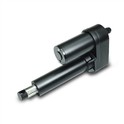Hey there! As a gas damper supplier, I've seen a lot of questions about whether a gas damper is working properly. In this blog, I'll share some practical ways to check if your gas damper is in good shape.
1. Visual Inspection
First things first, take a good look at the gas damper. Check for any obvious signs of damage like cracks, dents, or leaks. A cracked gas damper is a big no - no as it can lead to a loss of pressure inside the damper. If you see any fluid leaking from the damper, that's also a red flag. This fluid is usually the hydraulic oil that helps the damper work smoothly.
For example, if you're using a Gas Damper for Car, you can visually inspect it when you're doing regular car maintenance. Pop the hood and have a look at the dampers near the suspension. Any visible damage could affect the car's handling and safety.
Similarly, for Cabinet Gas Damper, open the cabinet and check the dampers attached to the doors. Look for any signs of wear and tear on the body of the damper or the mounting points. If the mounting points are loose or damaged, the damper won't work as it should.
2. Check the Movement
One of the key functions of a gas damper is to control the movement of an object. So, test the movement of the part that the gas damper is attached to.
If it's a car gas damper, take the car for a short drive on a bumpy road. Pay attention to how the car rides. A properly functioning gas damper will absorb the shocks from the bumps and keep the car stable. If you feel excessive bouncing or a rough ride, the gas dampers might be failing. You can also try pushing down on the corner of the car and then releasing it. The car should bounce back once or twice and then settle. If it keeps bouncing, the damper is likely not working well.
For cabinet gas dampers, open and close the cabinet doors slowly. The doors should open and close smoothly without any sudden jerks or slamming. If the door closes too quickly or doesn't close at all, there could be an issue with the gas damper. You can also try opening the door halfway and see if it stays in that position. A good gas damper will hold the door in place.
3. Measure the Force
Measuring the force exerted by the gas damper can give you a good idea of its performance.


There are special tools available to measure the force of a gas damper, but you can also do a simple test at home. For a small cabinet gas damper, you can use a spring scale. Attach the scale to the moving part of the damper and pull or push it in the direction of the damper's movement. Compare the force you measure with the specifications provided by the manufacturer. If the measured force is significantly different from the specified force, the damper might be faulty.
For larger gas dampers like those used in industrial applications, it's better to use professional measuring equipment. However, if you notice a big difference in the effort required to operate the equipment compared to before, it could indicate a problem with the gas damper.
4. Listen for Unusual Noises
Pay attention to any strange noises coming from the gas damper.
In a car, if you hear a knocking or rattling sound when going over bumps, it could be a sign that the gas damper is loose or damaged. The noise might be coming from the damper hitting against other parts of the suspension.
For cabinet gas dampers, if you hear a hissing sound when opening or closing the door, it could mean that there is a leak in the damper. The hissing sound is the gas or fluid escaping from the damper, which will affect its performance over time.
5. Compare with a New Damper
If possible, compare the suspect gas damper with a new one of the same type.
Take a new Gas Damper for Car and install it on one side of the car. Then drive the car and compare the ride on the side with the new damper to the side with the suspect damper. You should be able to feel the difference in the handling and shock absorption.
For cabinet gas dampers, install a new damper on one door and compare the opening and closing movement with the door that has the suspect damper. This can help you quickly identify if there is a problem with the old damper.
6. Check the Temperature
Gas dampers generate heat during operation, but excessive heat can be a sign of trouble.
After using the equipment that the gas damper is attached to for a while, carefully touch the damper (be careful not to burn yourself). If it's extremely hot to the touch, it could indicate that the damper is working too hard or there is an internal problem. For example, in a high - speed industrial application, a gas damper that gets too hot might be overloaded or have a blockage inside.
7. Inspect the Seals
The seals on a gas damper are crucial for keeping the gas and fluid inside.
Check the seals around the piston rod and the body of the damper. If the seals are damaged or worn, they can allow the gas or fluid to leak out. You might notice a thin film of oil around the seals if there is a leak. Replace the seals if they are damaged to restore the damper's performance.
Why It Matters
Ensuring that your gas dampers are working properly is important for several reasons.
In a car, good gas dampers improve the safety and comfort of the ride. They help the tires stay in contact with the road, which is essential for braking and steering. A faulty gas damper can increase the stopping distance of the car and make it more difficult to control, especially in emergency situations.
For cabinets, properly functioning gas dampers protect the doors and the contents of the cabinet. They prevent the doors from slamming shut, which can damage the hinges and the items inside the cabinet.
Conclusion
Checking if a gas damper is working properly is not that difficult if you know what to look for. By following these simple steps, you can identify potential problems early and take the necessary steps to fix them.
If you're in the market for high - quality gas dampers, whether it's Gas Damper for Car or Cabinet Gas Damper, we've got you covered. Our gas dampers are designed to meet the highest standards of quality and performance. If you have any questions or are interested in purchasing our products, feel free to reach out to us for a detailed discussion. We're always happy to help you find the right gas damper for your needs.
References
- Automotive Suspension Handbook: Principles, Analysis, and Design by Hans B. Pacejka
- Handbook of Pneumatic and Hydraulic Controls: Technology and Applications by W. Bolton






